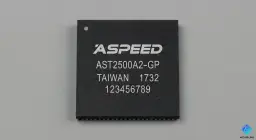
You can minimize voltage coefficient of resistance by using good resistors. Picking the right ones helps your circuit work well. Stable measurements need careful choices. Good design keeps your circuit accurate.
-
Pick resistors that do not change much with voltage to minimize voltage coefficient
-
Look at what the resistor is made of and how it is built to minimize voltage coefficient
-
Read the details before you start building to minimize voltage coefficient
Key Takeaways
-
Pick resistors with a low voltage coefficient of resistance (VCR) for better circuit accuracy. Check the datasheet for these values.
-
Use metal film or thin film resistors for more stable results. These resistors keep their resistance steady when voltage changes.
-
Watch out for things like temperature and humidity to stop resistance from changing. Keep resistors dry and handle them with care.
Voltage Coefficient of Resistance Explained
What Is VCR?
You should know what VCR means before picking resistors. VCR stands for voltage coefficient of resistance. This tells you how much a resistor’s resistance changes with voltage. When voltage goes up, resistance might change too. You want a resistor with low VCR to keep your circuit correct.
Tip: Always look for the VCR value in the resistor’s datasheet. A low VCR gives you better stability.
VCR in Precision Circuits
VCR is very important in high-voltage and precision circuits. These circuits need resistors that stay stable. If you use a resistor with high VCR, resistance can change a lot when voltage changes. This can make your circuit give wrong answers.
-
High-voltage circuits
-
Precision measurement circuits
-
Sensitive analog circuits
-
VCR shows how much a resistor changes with voltage.
-
Low VCR resistors are best for high-voltage circuits.
-
High VCR can cause problems by changing resistance.
Factors Affecting VCR
You should check what the resistor is made from. The material changes the voltage coefficient of resistance. Temperature and voltage also matter. Some resistors handle voltage changes better than others.
| Resistor Type | Voltage Coefficient of Resistance (ppm/V) |
|---|---|
| Metal Film Resistor | < 1 ppm/V |
| Carbon Film Resistor | -10 ppm/V |
Metal film resistors have a much lower VCR than carbon film resistors. You get better accuracy with metal film resistors. Always think about the environment and voltage when you choose a resistor.
How to Minimize Voltage Coefficient in Circuits
Low VCR Resistor Selection
You can lower voltage coefficient in your circuits by picking the right resistor. The kind of resistor you choose affects how steady resistance stays. Thin film resistors usually have a much lower voltage coefficient than thick film resistors. This means thin film resistors keep their resistance steady when voltage changes. Thick film resistors can change more, especially in high-value chips.
| Resistor Type | Typical VCR Values |
|---|---|
| Thin Film | Less than 2 ppm/V |
| Thick Film | Less than 10 ppm/V (low value chips), 200-300 ppm/V or more (high value chips) |
You should always look at the datasheet for the voltage coefficient value. For careful work, pick resistors with the lowest voltage coefficient you can find. Metal film resistors also have low voltage coefficient and stay steady. In high-voltage or sensitive jobs, always use resistors with low voltage coefficient to keep measurements correct.
Tip: For medical or aerospace electronics, always pick resistors with a low voltage coefficient. Even small resistance changes can cause big problems in these areas.
Design Practices to Reduce VCR
You can use smart design steps to lower voltage coefficient in your circuits. Start by picking resistors with low voltage coefficient and low temperature coefficient. What the resistor is made of matters. Precision thin film resistors or ones made from special metal alloys help keep resistance steady.
Here are some things you can do:
-
Put resistors on the board carefully. Symmetrical copper patterns help keep both ends of the resistor at the same temperature.
-
Do not stress resistors when mounting. Stress can change resistance very fast.
-
Use mounting ways that lower heat effects. Good airflow and space help keep resistor temperature steady.
-
Pick resistors with low temperature coefficient for long-term accuracy. This stops resistance drift as the circuit heats up.
Note: The voltage coefficient effect happens quickly, much faster than temperature changes. You need to control both for the best results.
Environmental and Application Tips
Things around your circuit can change resistance and affect how steady it is. Temperature, humidity, and stress all matter. You should control these things to lower voltage coefficient and keep your circuit steady.
| Environmental Factor | Impact on Resistor Stability |
|---|---|
| Humidity | Can cause moisture absorption, leading to resistance drift |
| Mechanical Stress | May result in physical deformation, altering resistance |
| Corrosive Substances | Can degrade the resistor material, causing permanent changes |
Keep resistors dry and away from bad chemicals. Handle them gently so you do not bend or stress the leads. In careful jobs like medical devices or aerospace systems, even small temperature changes can shift resistance. Always use resistors with low temperature and voltage coefficient for the best results.
Callout: Knowing and controlling temperature coefficient is important. Even small resistance drift can cause big problems in sensitive circuits.
Common VCR Mistakes
You can avoid many problems by watching out for common mistakes when you try to lower voltage coefficient in precision circuits.
-
Do not forget the resistor datasheet. Always check the voltage coefficient and temperature coefficient values.
-
Do not use high-value thick film resistors in high-voltage circuits. Their resistance can change a lot with voltage.
-
Do not put resistors near heat or in places with poor airflow. This can cause uneven heating and resistance drift.
-
Do not use uneven copper patterns on your PCB. This can make temperature different at the resistor ends and change resistance.
-
Do not forget about things like humidity, stress, and bad chemicals. These can all change resistance.
If you follow these tips and steps, you will lower voltage coefficient and keep your precision circuits steady and reliable.
You can keep your circuits accurate by using the right methods. Always check resistor datasheets, use low VCR parts, and control the environment. Try these methods in your next project. Make a checklist for resistor selection and design. Stay focused on low VCR to get the best results every time.

Written by Jack Elliott from AIChipLink.
AIChipLink, one of the fastest-growing global independent electronic components distributors in the world, offers millions of products from thousands of manufacturers, and many of our in-stock parts is available to ship same day.
We mainly source and distribute integrated circuit (IC) products of brands such as Broadcom, Microchip, Texas Instruments, Infineon, NXP, Analog Devices, Qualcomm, Intel, etc., which are widely used in communication & network, telecom, industrial control, new energy and automotive electronics.
Empowered by AI, Linked to the Future. Get started on AIChipLink.com and submit your RFQ online today!
Frequently Asked Questions
What does voltage coefficient of resistance mean?
Voltage coefficient of resistance shows how much a resistor changes when voltage changes. If the value is low, your circuit stays more accurate.
How do you choose a resistor with low VCR?
Look at the datasheet to find the VCR value. Thin film and metal film resistors usually have the lowest voltage coefficient. These are good for careful work.
Can VCR affect reducing voltage from 12v to 5v?
VCR can change the output in voltage divider circuits. Using resistors with low VCR helps keep the voltage steady when you lower it from 12v to 5v.














